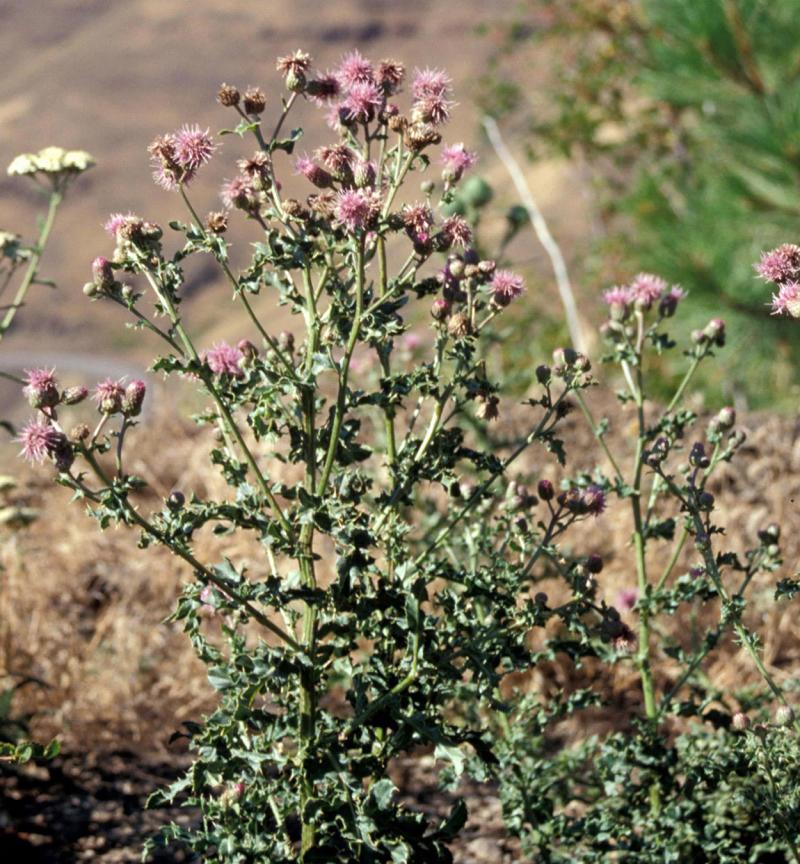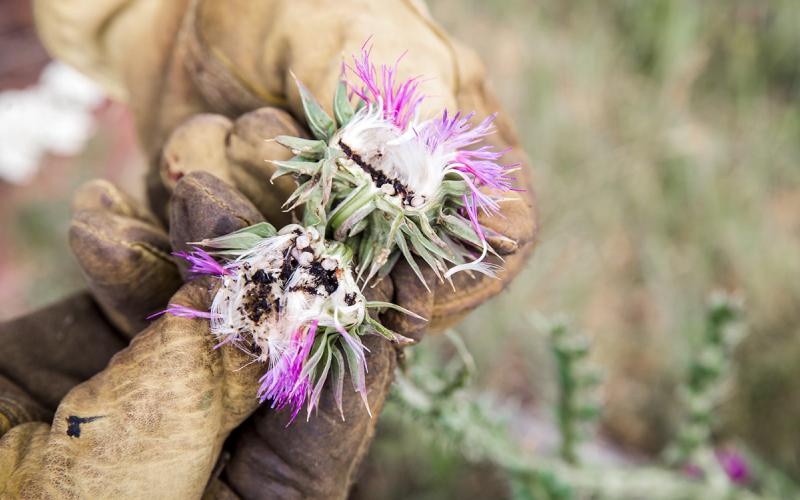Written collaboratively by Eric Jones, Philip Rozeboom, David Vos, and Jill Alms.
Most herbicide applications to control noxious weed have already occurred. However, now is the time to consider fall applications for noxious weed control.

Why Use Fall Herbicides?
Perennial weeds, such as Canada thistle, begin to transport assimilates and nutrients down to the roots in the fall to survive the winter months. An herbicide application in the fall can be more effective by killing the underground plant material since the herbicide will translocate with the nutrients. Fall control of Canada thistle is usually best after a mowing or spring herbicide application where regrowth has occurred. However, if plants were not treated with herbicide or mowed in the spring, the control with a fall herbicide application alone may not provide effective control. If plants are only to be treated in the fall, applications should be made to small plants (which are less than 12 inches in height or in the rosette stage).
Mowing may need to be implemented prior to fall herbicides to ensure the droplets land on the weeds and are not intercepted by grass or other vegetation growing in proximity. Mowing large, flowering Canada thistle plants will significantly reduce seed production. If areas of Canada thistle are small and isolated around the landscape, spot spraying is a viable option over a broadcast application.
Effective Herbicides
Effective herbicides for Canada thistle control in the fall include, but are not limited to: 2,4-D (requires spring retreatment and may not provide satisfactory control alone), aminopyralid, clopyralid (control is more-effective in early fall), dicamba, glyphosate (non-selective; this herbicide can kill desirable plants in proximity, and is best used for spot treatment), and picloram. Consult herbicide labels and the SDSU Extension noxious weed management guide for product trade names, use/use restrictions, and use rates.
Environmental Considerations
Environmental conditions can influence Canada thistle control with herbicides in the fall. Adequate soil moisture will likely aid in the effectiveness of the herbicide application, as the plant should be growing actively. Herbicide effectiveness is decreased under drought conditions. Killing frosts occur in the fall in South Dakota and can reduce the effectiveness of a prior herbicide application. If a frost occurs before the treatment, wait at least 24 hours to determine if the foliage is killed (symptoms include necrotic [brown tissue] and wilted tissue) or survives. If the plant foliage is killed, do not apply the herbicide, as it will not be absorbed; if the foliage survives, herbicide can be applied if temperatures are to remain above freezing.
Similar to fall-only herbicide applications, spring-only herbicide applications may not provide effective control alone. Effective noxious weed management plans should utilize both spring and fall herbicide applications. Fall herbicide applications are also a good time to make notes on what other weed species are present and where the problem areas are in the landscape. Making detailed notes early can improve weed control in the spring by purchasing the most-effective herbicides and applying them in the correct places.

